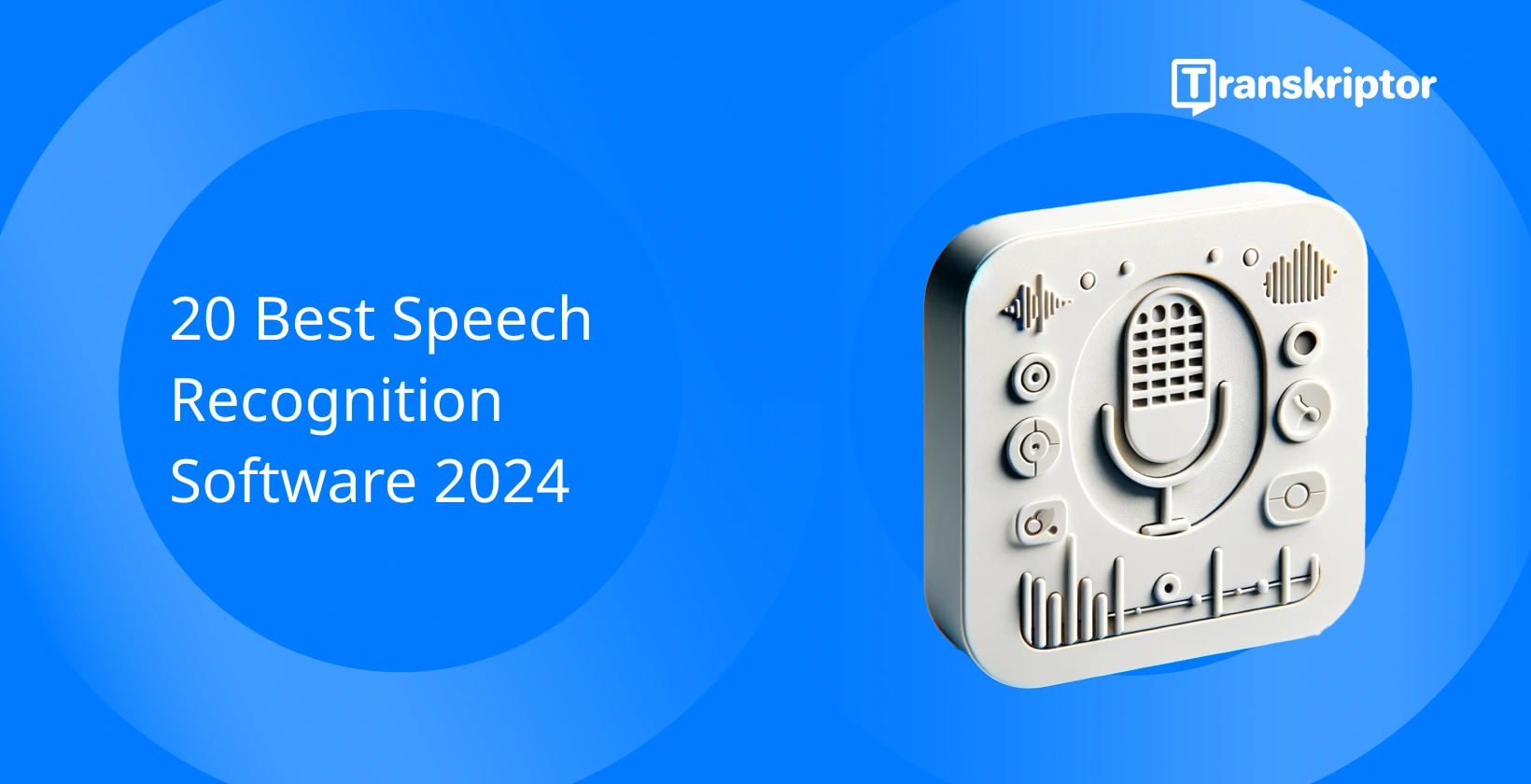The 20 best speech recognition software in 2024 are listed below.
- Transkriptor: An online transcription tool harnessing artificial intelligence for fast and accurate transcription, ideal for various audio files like interviews and podcasts.
- Siri: Siri is a virtual assistant developed by Apple.
- Otter: Otter.ai is a cloud-based speech-to-text software.
- Cortana: Cortana is a digital assistant by Microsoft.
- Rev: Rev.ai offers speech-to-text APIs for speech recognition software.
- Gboard: Gboard integrates Google’s speech recognition technology for voice-typing.
- Google Now: Google Now is a voice-activated assistant that provides information based on user habits.
- Winscribe: Winscribe Dictation is a professional speech recognition and dictation software.
- Amazon Lex: Amazon Lex is an AI service to create chatbots and voice applications.
- Google Docs Voice Typing: Google Docs Voice Typing is a feature within Google Docs to dictate documents.
- Speechnotes: Speechnotes is a speech-enabled online notepad to transcribe speech.
- Dragon Anywhere: Dragon Anywhere is a professional cloud-based dictation software.
- Braina: Braina is a personal assistant and voice recognition software for Windows computers.
- Beey: Beey is an online dictation service.
- Philips SpeechLive: Philips SpeechLive is a cloud-based dictation software.
- Windows 10 Speech Recognition: Windows 10 Speech Recognition is a feature of the Windows operating system.
- Google Cloud Speech API: Google Cloud Speech API enables developers to convert audio to text.
- Voice Finger: Voice Finger is software for users to control their computers by voice.
- Microsoft Bing Speech API: Microsoft Bing Speech API is a cloud-based speech recognition software.
- Dragon Speech Recognition Solutions: Dragon Speech Recognition Solutions is a high-quality speech recognition software.
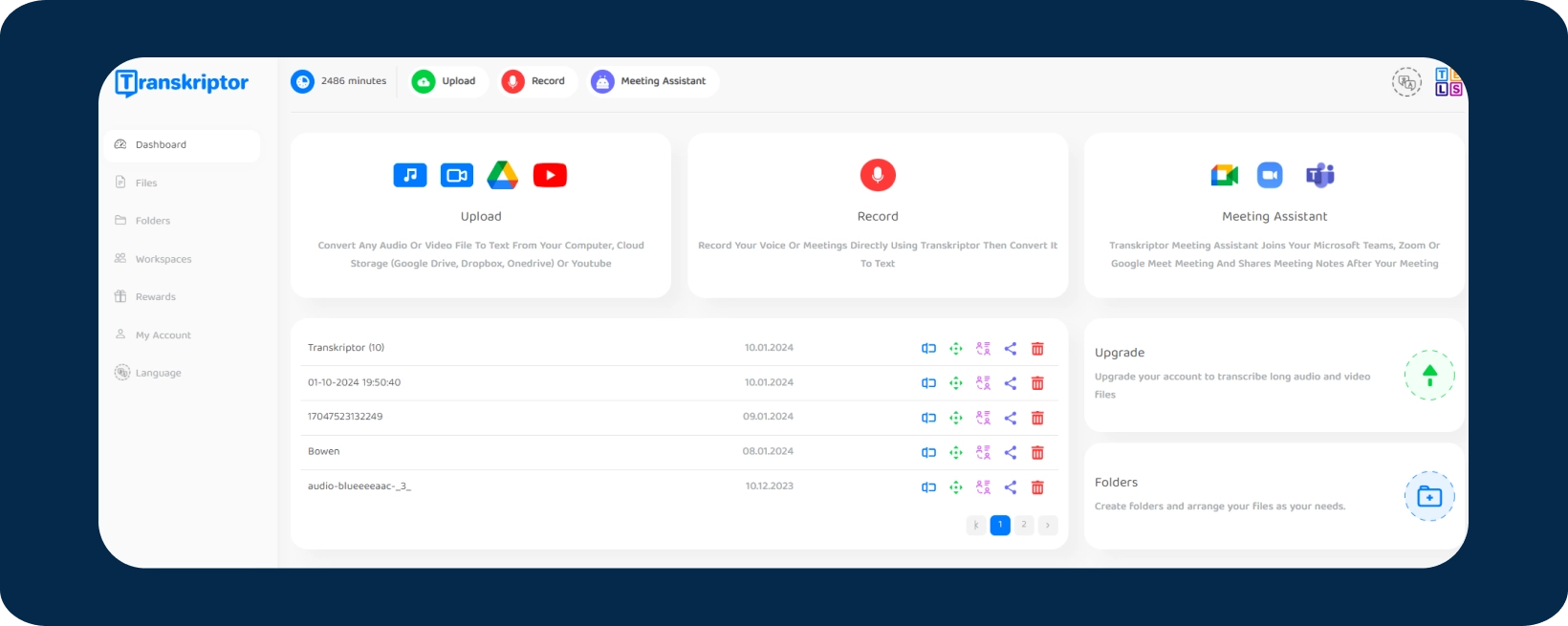
1. Transkriptor
Transkriptor is a strong AI-powered dictation service with up to 99% accuracy, available as an Android and iPhone mobile app, a Google Chrome extension, and a webpage. Transkriptor makes transcriptions from any link and turns live voice into text, such as meetings, interviews, and lectures.
Customer satisfaction rates the program 4.5 out of 5 based on more than 50 Capterra evaluations and 4.8out of 5 based on more than 100 Trustpilot ratings.
Transkriptor is a low-cost transcription solution for companies of all sizes. It hastwo price packages. The $4.99 per month Lite plan provides 5 hours of transcription. The Premium plan is $12.49 per month and comes with 40 hours of transcription.
Transkriptor provides extensive language support, supporting over a hundred languages and allowing the user to create textual content in numerous languages at the same time. Language coverage is a crucial factor to consider while developing dictation software.
2. Siri
Siri is a virtual assistant which uses speech recognition technology. Apple developed Siri and it is available on Apple devices such as iPhone, iPad, Mac, and Apple Watch. Users give voice commands to Siri to perform actions.
Users give voice commands to initiate calls, send messages, and set reminders to Siri. Siri learns from users' commands in time and it is easily personalized. Siri supports various languages. These languages include Arabic, Chinese, English, French, German, Italian, Japanese, Korean, Portuguese, Spanish, Swedish, and Turkish.
The pros of Siri are being user-friendly, convenient, integration with Apple devices, and regular updates. Siri is easy to use. Say “Hey Siri” to an Apple device to start using Siri.
The cons of Siri are limited usage of Apple devices and occasional misinterpretations. Users activate Siri without additional costs on Apple devices.
Siri’s primary aim is to provide device control, unlike other speech recognition software. User feedback says that Siri is convenient to use as it is compatible with Apple devices. Some users point out that it is not good at recognizing speech in noisy environments.
3. Otter
Otter.ai is a cloud-based speech-to-text software. Key features of Otter.ai are live transcription, speaker identification, search function, and collaboration. Otter recognizes different speakers and it indicates each speaker. Users search and locate the specific words in the transcript.
The pros of Otter are high accuracy and ease of use. Otter provides a high level of accuracy. It transcribes even complex terms correctly. The cons of Otter are limited offline functionality and dependent on an internet connection.
Otter.ai provides a free plan with limited minutes per month. It has different paid plans. Paid plans offer more minutes and additional features. Otter creates transcriptions with multi-speaker audio, unlike some other software which transcribes only individual speech.
Users give positive ratings to Otter.ai. They appreciate its high accuracy and convenience. Users highlight Otter’s user-friendly interface. Some users mention that there are occasional inaccuracies in noisy environments.
4. Cortana
Cortana is a digital assistant by Microsoft. Cortana utilizes speech recognition to perform tasks, set reminders, and provide personalized assistance. The key features of Cortana are voice commands, integration, and personalized experience.
The pros of Cortana are Windows integration, natural language understanding, and free use. Cortana understands natural language effectively. Cortana comes built-in with Windows 10 without additional cost.
The cons of Cortana are limited platform use and privacy concerns. Cortana’s integration outside Microsoft is limited. Users have privacy concerns about data collection.
Cortana is primarily a digital assistant, unlike other speech recognition software. Users use Cortana to perform different tasks rather than only using the transcription feature. Ratings of Cortana change as it is useful with Windows 10 but not so useful with other operating systems. Users indicate its convenience within the Windows ecosystem.
5. Rev
Rev is a company for audio and video transcription. Rev.ai offers speech-to-text APIs for speech recognition software. The key features of Rev.ai are automatic transcription, multiple language support, and timestamps, and speaker indication. Rev.ai supports various languages and dialects.
The pros of Rev.ai are high accuracy rates, ease of integration, and scalability. Rev.ai gives highly accurate transcriptions. It is developer-friendly with its easy integration feature. Rev.ai is suitable for large volumes of transcriptions.
The cons of Rev.ai are dependence on audio quality and limited functionality without the internet. Audio quality highly affects the accuracy of transcription. Rev.ai requires an internet connection as it is a cloud-based service.
Rev.ai offers a free plan with limited transcription minutes. Rev.ai has different paid plans depending on the transcription minutes. Ratings of Rev.ai highlight its accuracy level and ease of use. Positive reviews say the transcription speed is high.
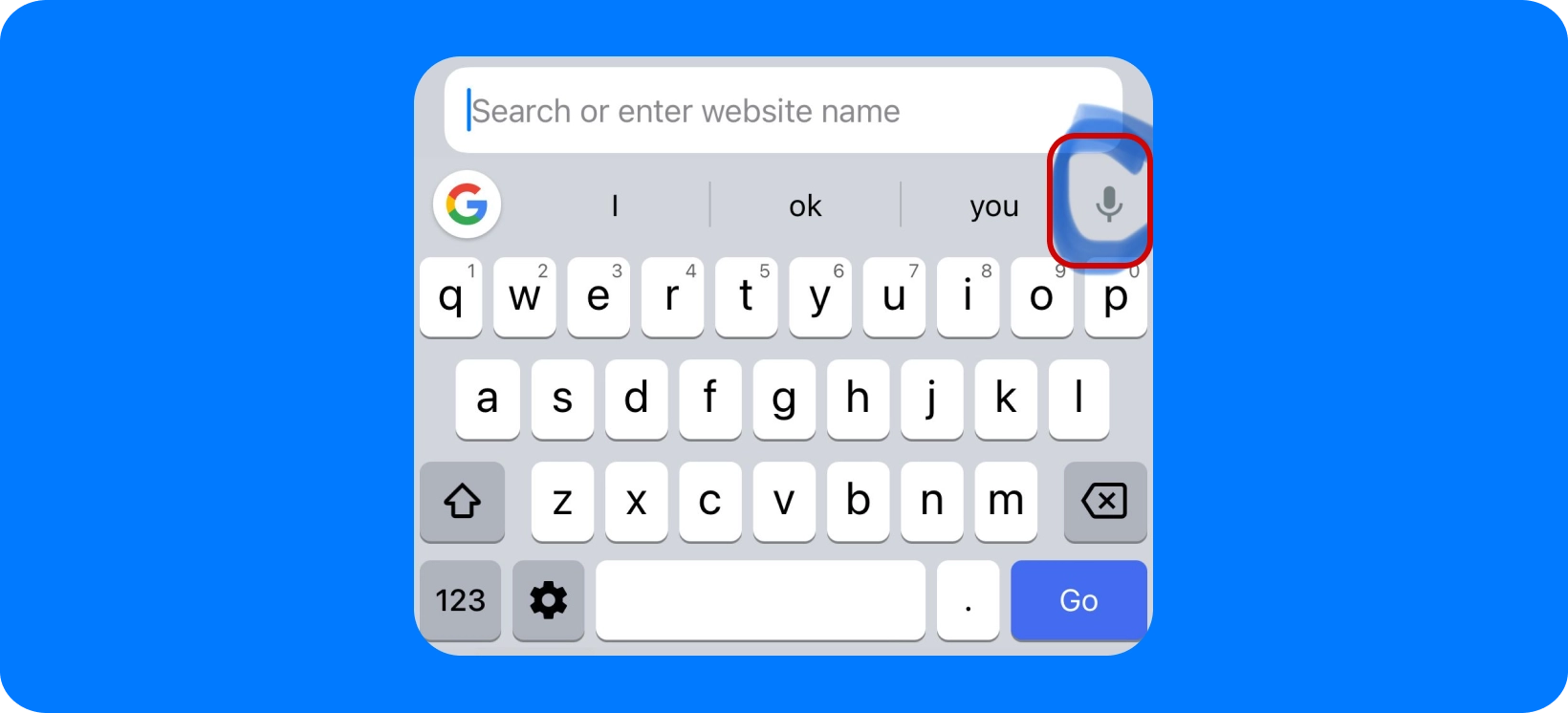
6. Gboard
Gboard is a virtual keyboard app by Google. It is available on Android and iOS devices. Gboard integrates Google’s speech recognition technology to facilitate voice-typing. The key features of Gboard are voice typing, glide typing, emoji and GIF search, and integration with Google Translate.
The pros of Gboard are versatility and integration with Google services. Gboard is highly versatile with input methods such as voice typing and voice glide. The cons of Gboard are limited performance and internet requirements. The performance of Gboard in voice typing depends on the device’s capabilities.
Gboard is a free software. The ratings for Gboard are high both on the Google Play Store and the App Store. Users appreciate its user-friendly design and the convenience of voice typing. Gboard has occasional glitches and lags.
7. Google Now
Google Now is a voice-activated assistant which provides information based on user habits. The key features of Google Now are proactive information cards and voice commands. Google Now displays information cards based on user habits. Google Now supports voice commands to perform various tasks.
The pros of Google Now are ease of use and customization. Google Now is good at simple voice commands and it has a user-friendly interface. Google Now tailors information based on user interactions and habits.
The cons of Google Now are limited offline functions and limited voice commands. Google Now’s most features depend on an internet connection.
Google Now is a free service. It is available both on the Google Play Store and the App Store. Ratings and feedback praise its innovative approach to speech recognition technologies.
8. Winscribe
Winscribe Dictation is a professional speech recognition and dictation software. Healthcare, legal, and insurance industries highly prefer Winscribe. The key features of Winscribe are mobile support and speech recognition quality. Winscribe is compatible with smartphones.
The pros of Winscribe are flexibility and customization. Winscribe allows users to dictate remotely. Users customize Winscribe to fit in the specific terminology of various industries. The cons of Winscribe are cost and difficulty of use, compared to other dictation services.
Pricing for Winscribe depends on the specific needs of the users. Winscribe offers a quote-based pricing model. Ratings for Winscribe Dictation are positive in professional industries. Negative feedback includes its difficulty to use without a training process.
9. Amazon Lex
Amazon Lex is an AI service to create chatbots and voice applications. The key features of Amazon lex are high-quality speech recognition and natural language understanding. It helps to create conversational bots to engage in dialogues.
The pros of Amazon Lex are scalability and integration. Amazon Lex allows users to build complex conversational systems. Amazon Lex integrates various platforms. The cons of Amazon Lex are the difficulties of use and costs.
Pricing of Amazon Lex depends on the needs of users. It has a free tier for the first 12 months. Paid plans change according to the requirements of users. Amazon Lex provides a framework to build interactive apps, unlike other speech recognition services.
Ratings for Amazon Lex are generally positive among developers. Users highlight its effectiveness in creating responsive chatbots. Negative feedback indicates its difficulty to use.
10. Google Docs Voice Typing
Google Docs Voice Typing is a feature within Google Docs. Students, writers, and professionals prefer Google Docs Voice Typing to dictate documents. The key features are functionality and a user-friendly interface. The feature is very accessible with a click on the microphone icon in Google Docs.
The pros of Google Docs Voice Typing are its ease of use and accessibility. It is accessible to all Google Docs users. The cons of Google Docs Voice Typing are reliance on an internet connection and limited use. It does not work without a stable internet connection.
Google Docs Voice Typing is a free feature within Google Docs. Users access the feature with a Google account for free. Positive feedback appreciates its integration into the daily workflow without an additional cost. Negative feedback includes limitations in voice recognition accuracy compared to other dictation software.
11. Speechnotes
Speechnotes is a speech-enabled online notepad. It helps users to transcribe speech to text. The key features of Speechnotes are high accuracy and punctuation commands. Speechnotes gives highly accurate transcriptions.
The pros of Speechnotes are its user-friendly interface and efficiency. Users do not need to install additional software to dictate. The cons of Speechnotes are reliance on an internet connection and limited understanding of dialects. Speechnotes require a stable internet connection to dictate.
Speechnotes is free to use with ads. The paid version provides additional features and it does not include ads. Ratings and feedback for Speechnotes are generally positive. Users appreciate its simplicity and accuracy.
12. Dragon Anywhere
Dragon Anywhere is a professional cloud-based dictation software. Users create and edit documents on iOS and Android devices with Dragon Anywhere. The key features of Dragon Anywhere are voice formatting and editing options.
The pros of Dragon Anywhere are customization and continuous dictation. Dragon Anywhere does not have time and length limitations. The cons of Dragon Anywhere are being subscription-based and relying on an internet connection.
Pricing for Dragon Anywhere depends on a monthly or annual subscription. Users choose a payment plan according to their needs. User feedback praises Dragon Anywhere’s ability to adapt to the user’s voice. Negative feedback includes the pricing of the software.
13. Braina
Braina is a personal assistant and voice recognition software for Windows computers. The key features of Braina are AI chatbot, task automation, and remote control. Braina answers questions from users with contextual understanding. Users access and control their computers via the Braina app.
The pros of Braina are custom commands and flexible use. Braina allows the creation of custom commands for personalized use. It is compatible with text input fields and software. The cons of Braina are high prices.
Braina has both free and paid versions. The paid version has a subscription model with monthly or annual payments. User feedback praises Braina’s ease of use and efficiency. Negative feedback focuses on occasional misunderstandings due to speech recognition errors.
14. Beey
Beey is an online dictation service. The key features of Beey are time stamping and speaker identification. Beey adds automatic timestamps to transcriptions. Beey identify and differentiate between speakers in a conversation.
The pros of Beey are user interface and speed. Beey’s intuitive web interface makes it easy to upload files and transcribe..The cons of Beey are internet reliance and limited editing features. Beey requires a stable internet connection as it is web-based.
Beey operates on a pay-per-use basis. Pricing depends on the length of the audio or video file. Positive user feedback highlights Beey’s convenience for interview and lecture transcription. Negative feedback mentions the high pricing methods of Beey.
15. Philips SpeechLive
Philips SpeechLive is a cloud-based dictation software. Professionals who require efficient document creation prefer Philips SpeechLive. The key features of Philips SpeechLive are live transcription and being cloud-based. Philips SpeechLive offers real-time speech recognition technology.
The pros of Philips SpeechLive are flexibility and efficiency. Users record dictations on the go with a mobile app. The cons of Philips SpeechLive are the difficulty of use and pricing. Users need training to efficiently use the software.
Philips SpeechLive operates on a subscription model based on the volume of the transcription. It also has a free trial for users to try the software. Positive user feedback highlights the convenience of the mobile app for dictation. Negative user feedback includes reliance on an internet connection.
16. Windows 10 Speech Recognition
Windows 10 Speech Recognition is a free feature of the Windows operating system. The key features of Windows 10 Speech Recognition are system control and training. Users navigate through Windows, control applications, and manage files with voice commands..
The pros of Windows 10 Speech Recognition are pricing and accessibility. The software is available without additional costs as it is a built-in feature. The cons of Windows 10 Speech Recognition are accuracy level and language support. Speech recognition is not as accurate as other programs.
Positive feedback and reviews appreciate the system control feature and its free use. Negative user feedback includes less accuracy and limited language support.
17. Google Cloud Speech API
Google Cloud Speech API enables developers to convert audio to text. The API recognizes over 120 languages. The key features of Google Cloud Speech API are real-time speech recognition, automatic speech recognition (ASR), and customization. Google Cloud Speech API provides real-time speech recognition.
The pros of Google Cloud Speech API are scalability and flexibility. It is capable of handling large volumes of voice data. The cons of Google Cloud Speech API are pricing and complexity. It is an expensive software although it offers a free tier.
Google Cloud Speech API offers a free tier with limits. Pricing varies according to the amount of the audio. Positive user feedback includes high accuracy levels and customization options. Negative user feedback focuses on the complexity of the interface and high pricing methods.
18. Voice Finger
Voice Finger is a software for users to control their computers by voice. Voice Finger enhances the accessibility of disabled people. The key features of Voice Finger are hands-free control and a grid system. Voice Finger offers comprehensive voice commands to control the mouse and keyboard hands-free.
The pros of Voice Finger are accessibility and efficiency. Voice Finger provides full accessibility for people who are disabled. Voice Finger is designed to execute commands quickly. It performs actions in a very short time.
The cons of Voice Finger are complexity and limited functionality. Users need time and practice to learn the grid system. The focus of Voice Finger is on controlling the computer rather than dictation.
Voice Finger is available for purchase at a one-time cost. There are no additional subscription features. Positive user feedback includes providing accessibility for disabled people. Negative user feedback highlights the complexity of the system.
19. Microsoft Bing Speech API
Microsoft Bing Speech API is a cloud-based speech recognition software. It enables developers to create interactive voice experiences.The key features of Microsoft Bing Speech API are live transcription and speech translation. The software transcribes audio in real time.
The pros of Microsoft Bing Speech API are flexibility and customization. Users have access to the software on a wide range of applications. It allows the customization of speech recognition models. It accommodates domain-specific vocabulary and terminology.
The cons of Microsoft Bing Speech API are cloud dependency and pricing. It relies on cloud connectivity. It, thus, does not work without an internet connection. It is relatively expensive for high-volume usage.
Microsoft Bing Speech API has a pay-as-you-go pricing model. Positive user feedback highlights its customization capacities. Negative user feedback includes the complex interface which is hard to learn.
20. Dragon Speech Recognition Solutions
Dragon Speech Recognition Solutions is a high-quality speech recognition software. The key features of Dragon Speech Recognition Software are deep learning technology and customization. It utilizes advanced machine learning to adapt the user's voice.
The pros of Dragon Speech Recognition Solutions are productivity and cross-device functionality. It reduces the time to produce documents. It supports dictation across desktop and mobile devices.
The cons of Dragon Speech Recognition Solutions are pricing and the need for a powerful system. The software is expensive, especially for professional use. It requires a powerful computer to run efficiently.
Dragon’s pricing is based on the licensing model. It has one-time purchases for individual use and subscription plans for professional use. Positive feedback highlights the accuracy and speed of the software. Negative user feedback includes customer service experience and pricing.
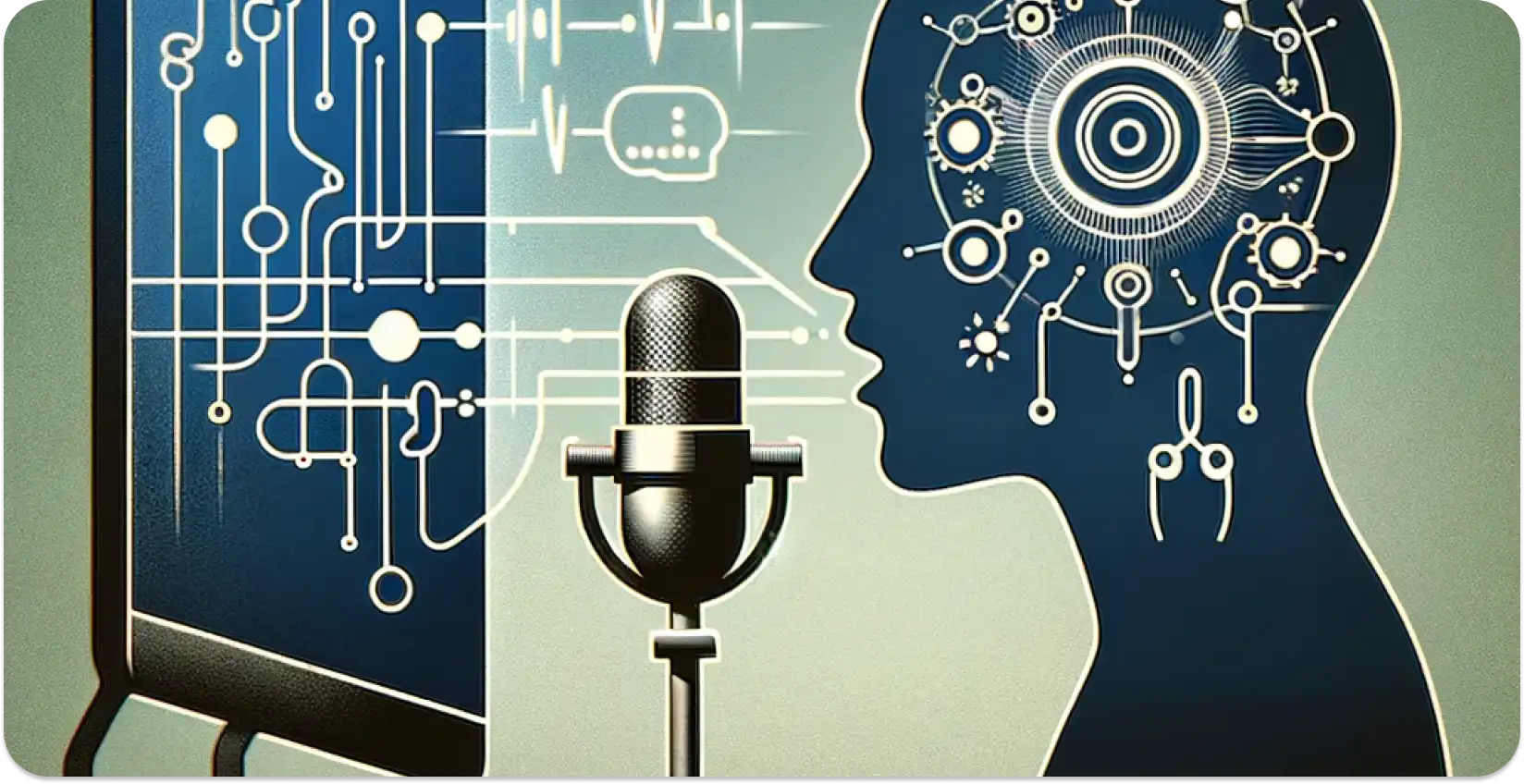
What is Speech Recognition?
Speech recognition is the capability to convert the spoken content into written text. Speech recognition technology operates by analyzing sound waves and using algorithms to convert sounds into text.
Speech recognition is referred to as automatic speech recognition (ASR) and speech-to-text. Advanced speech recognition systems understand the natural language and handle a wide variety of speaking accents, dialects, and vocabulary.
Is Speech Recognition the Same as Dictation?
No, speech recognition is not the same as dictation. They have slight differences although they are related. Speech recognition is the border technological capacity of computers to recognize human speech. It is an umbrella term for interpreting spoken language by a machine. Dictation refers to the process of converting speech into text. Dictation is a subset of speech recognition.
How to Choose a Voice Recognition Software?
Ensure that the voice recognition software has accuracy, language support, compatibility, and speed while choosing the software. Look for a software that accurately recognizes and transcribes speech. Ensure that the software supports the required languages or dialects. Make sure that the software is compatible with the operating system. Some software does not work on every operating system. The software must transcribe speech to text in real time to increase productivity. Check the capacities and features of the software before starting to use it.
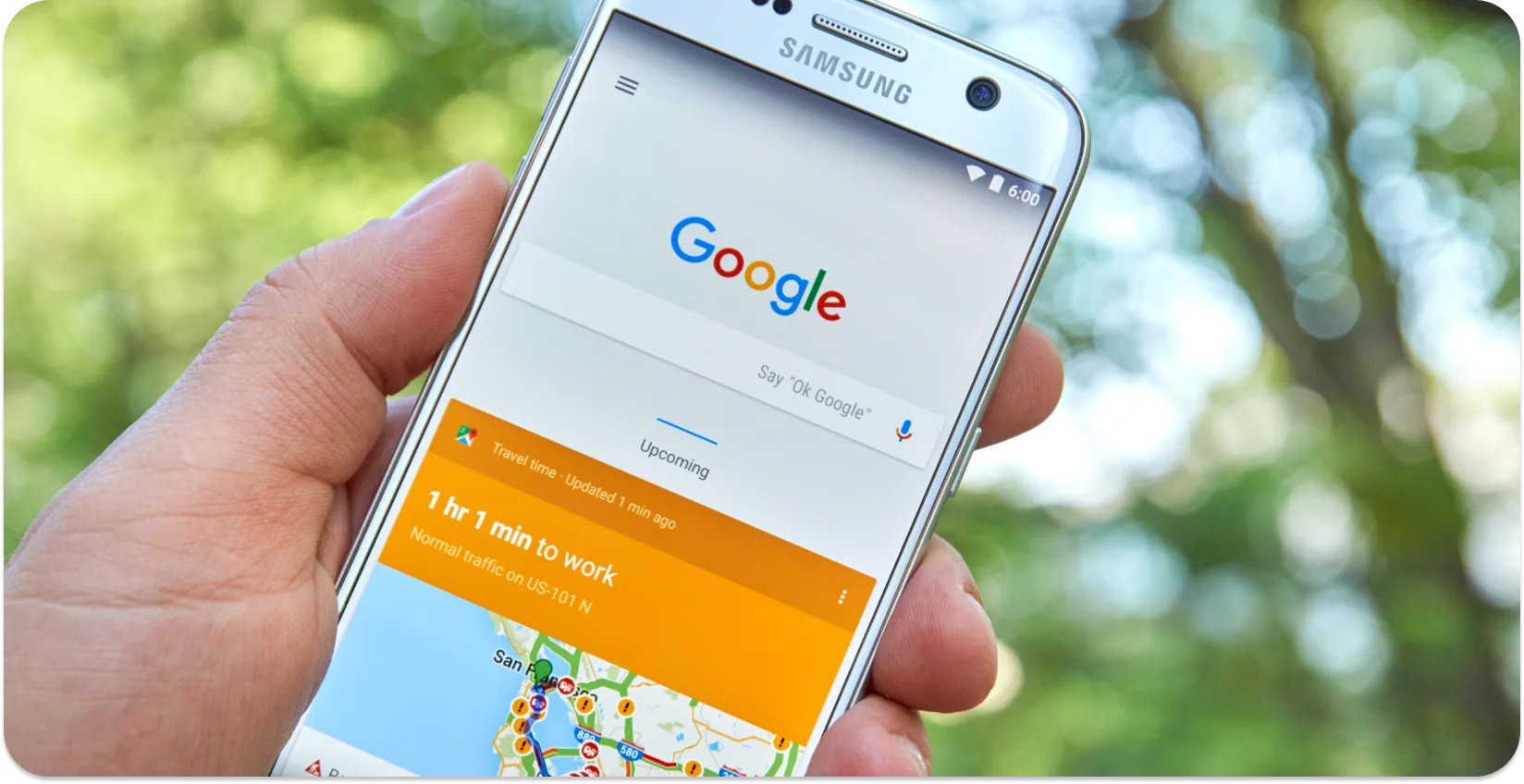
What is the Most Popular Speech Recognition Software?
The most popular speech recognition software is Google Now. Google Assistant is the most popular software because it is in the Android operating system. Android operating system has the largest market share. The worldwide use of Android makes Google Assistant accessible to a vast number of users.
Google Assistant is available on a wide range of devices. These devices include smartphones, tablets, and Google Home speakers. Google’s voice recognition is available on Google’s various applications and the Chrome browser.
What is the Best Speech Recognition Software for Windows?
The best speech recognition software for Windows is Windows 10 Speech Recognition. Windows 10 Speech Recognition does not have additional payments, it is free to use. Compatibility of the software provides ease of use.
Windows 10 Speech Recognition provides training for users. Users train the software before starting to use it. Training provides better recognition of the user’s voice. Windows 10 Speech Recognition also provides assistance with voice commands.
What is the Best Speech Recognition Software for Mac?
The best speech recognition software for Mac is Siri. Siri is Apple’s virtual assistant and uses voice commands to answer questions and perform actions. Siri allows users to use their voices to send messages, schedule meetings, and set reminders.
Siri uses advanced voice recognition and machine learning to understand user requests. Mac users prefer using Siri as the best speech recognition software since it is free on Apple devices and it is highly compatible.
Who Uses Voice Recognition Software?
General consumers, professionals, students, developers, and content creators use voice recognition software. General consumers use voice recognition to send text messages, make phone calls or control their devices with voice commands. Professionals who use voice recognition are generally lawyers, doctors, and journalists. They dictate domain-based information by using speech recognition software.
Students use voice recognition to take notes and write papers. They also dictate the lessons. Developers use the software to develop new applications of voice recognition technology. Content creators such as podcasters and YouTubers use transcription services to create text versions of their content. Speech recognition software is most popular for ease of use and speed for these people.
How Accurate is Voice Recognition Software?
The accuracy of voice recognition software depends on the software, quality of audio, background noises, and language support. Users choose software that dictates the speech accurately. Voice recognition systems such as Siri and Google Assistant offer high accuracy rates for common tasks.
The accuracy varies according to the quality of the audio. The software does not create accurate dictation if the audio quality is low. Background noises are important for the accuracy level. The software does not create dictation accurately if there are so many background noises.
